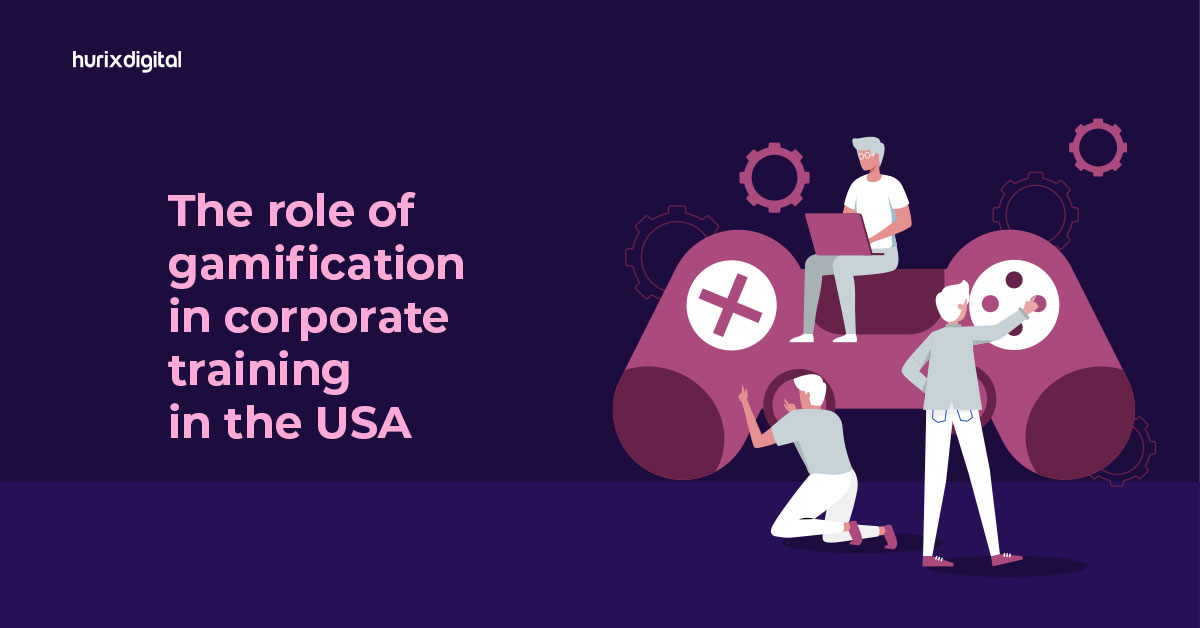
The Role of Gamification in Corporate Training in the USA
Summary
Learn about content gamification, its distinction from structured gamification, and how each approach can be used to enhance engagement and learning outcomes.
Gamification has become a popular corporate training solution strategy all over the world. Many corporations in the USA are using gamification in training to engage and motivate their employees. Consequently, the gamification industry is expected to cross more than $32 billion by 2025.
Corporate training has traditionally been seen as dull and tedious, with employees often viewing it as a necessary evil. However, gamification has transformed corporate training solutions into an exciting and engaging experience.
By incorporating game-like elements into training programs, companies can motivate their employees to actively participate in the learning process, leading to better retention of information.
If you are looking to understand in more depth the role of gamification in corporate training solutions in the USA, you’re in the right place. Let’s begin with the basics, starting with the concept of gamification.
What is Gamification?
Gamification is the process of adding game-like elements, such as points, badges, leaderboards, rewards, and other features typically associated with games, to non-game contexts, such as education, marketing, or business operations.
The goal of gamification is to make non-game activities more engaging, motivating, and enjoyable for users by tapping into their natural human instincts for competition, achievement, and social interaction.
Gamification can be used in a wide range of applications, from corporate training and employee engagement to customer loyalty programs and health and wellness initiatives.
What are the Advantages of Gamification in Corporate Training?
Here are some of the key advantages of gamification in corporate training:
1. Increased Engagement and Motivation
Gamification can make corporate training solutions more engaging and motivating for employees, leading to better learning outcomes and improved job performance.
By adding game-like elements such as rewards, points, and badges to training programs, employees are more likely to participate and stay engaged throughout the training process.
2. Higher Retention Rates
Gamification can enhance learning by providing immediate feedback, creating a sense of achievement, and promoting repeated practice.
Employees are more likely to remember and retain information when it is presented interactively and engagingly, which can lead to better job performance and skills development.
3. Personalization
Gamification can be used to create personalized learning experiences that cater to individual employee needs and preferences.
By tracking employee performance and behavior, corporate training programs can be customized to address specific knowledge gaps or skill deficiencies.
4. Enhanced Collaboration and Social Learning
Gamification can facilitate collaboration and social learning by creating a sense of community and encouraging teamwork among employees.
Leader boards and team-based competitions can promote healthy competition and drive collaboration among employees.
5. Improved Data Collection
Gamification in training can also be used to collect data on employee performance and engagement, which can be used to identify areas of strength and weakness in training programs.
This data can be used to improve training programs and optimize learning outcomes for employees.
6. Cost-Effective
Gamification can be a cost-effective way to enhance corporate training solutions. By leveraging existing technology and resources, companies can create gamified training experiences without incurring high costs.
How to Incorporate Gamification in Corporate Training?
There are many ways that gamification can be used in corporate training programs. For example, companies can use gamification to train employees on new software applications, sales techniques, or customer service skills.
They can also use gamification to teach employees about company policies, compliance regulations, or safety procedures.
One of the most popular uses of gamification in corporate training is through the use of eLearning platforms. These platforms offer a range of interactive features, such as quizzes, simulations, and games, that make the learning experience more engaging and enjoyable.
E-learning platforms also allow companies to track employee progress and monitor the effectiveness of their training programs.
Gamification can be used in live training sessions, such as workshops or seminars. Companies can use game-like activities to break up the training sessions and keep employees engaged. For example, they can use quizzes or trivia games to test employees’ knowledge and provide instant feedback on their performance.
Drawbacks of Gamification in Corporate Training
While gamification has many benefits for corporate training, it is important to note that it is not a one-size-fits-all solution.
Companies must carefully consider their training goals and objectives before implementing a gamification strategy. They must also ensure that the game-like elements are relevant to the content being taught and that they do not distract from the learning process.
Some potential drawbacks of gamification are:
- Over-reliance on rewards
- Limited applicability
- Design complexity
- Potential for distraction
- Risk of disengagement
Corporate Training Gamification in the USA
The use of gamification in corporate training has gained significant traction in the USA over the past decade.
According to a report by MarketsandMarkets, the global gamification market in the corporate sector is projected to grow from $9.1 billion in 2020 to $30.7 by 2025, with the American market representing a significant portion of this growth.
Several leading companies in the USA have successfully integrated gamification into their training programs. For example, IBM has implemented a gamification-based sales training program called IBM Quest that has reportedly increased sales productivity.
Similarly, Deloitte has created a gamified learning platform called Deloitte Leadership Academy that has been used by over 20,000 of its employees to enhance their leadership skills.
Another example is Marriott International, which implemented a gamification-based corporate training program called Hotel Dash to improve customer service and employee engagement.
The program involved a simulation game that placed employees in various hotel roles, such as front desk agent or housekeeper, and challenged them to complete tasks and earn points.
The use of gamification in corporate training solutions in the USA is on the rise and is likely to continue to grow as more companies recognize its potential to enhance engagement, learning outcomes, and job performance among employees.
Final Thoughts
If you are looking to incorporate gamification in your corporate training solutions, reach out to us at Hurix Digital. We provide quality digital content services and corporate training solutions.

Senior Vice President
Julia brings over 20 years of global experience in digital learning and business strategy. She specializes in client success, enterprise learning solutions, and driving growth through innovation, with a focus on AI, VR, and emerging technologies across diverse industry verticals.




